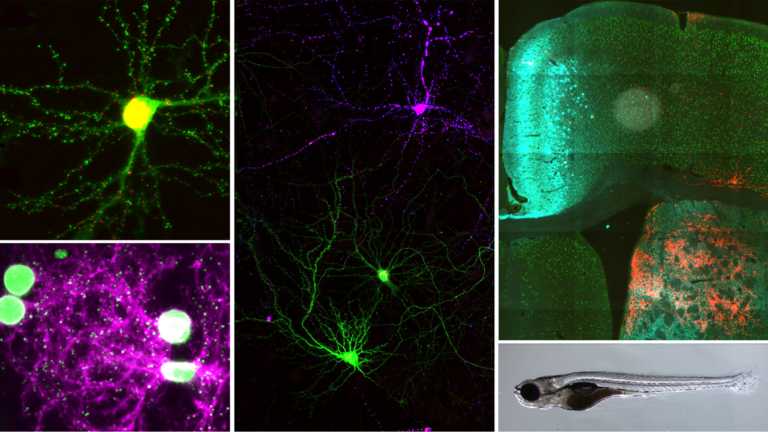Modifying the network of synaptic connections between neurons is thought to be the main mechanism for storing information in the brain. We are currently using novel technology, developed in the Arnold lab, to visualize and ablate synaptic connections in living organisms, allowing us to examine how the brain encodes information. We have developed novel recombinant probes known as intrabodies (or FingRs), which label synaptic proteins such as PSD95, Gephyrin and CamKii with very high fidelity and without causing off-target effects. These probes can also be used to ablate their target proteins, leading to functional elimination of synapses in a fast, efficient and specific manner. We have used FingRs to visualize the formation of memories in larval zebrafish. More recently, we have developed ATLAS, a method for mediating anterograde tracing from genetically determined neurons. We believe that these will be powerful tools for observing and manipulating a wide variety of molecular and cell biological processes in the context of living organisms.
Arnold lab news
We posted a preprint for our work on ATLAS, a method for anterograde transsynaptic tracing from genetically determined neurons ATLAS preprint.
We published a paper in PNAS examining how synapses change when a memory is made 1/2022 PNAS
